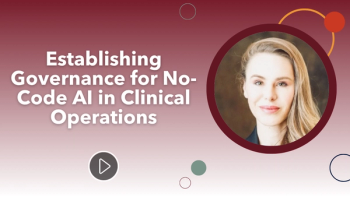Today’s pharma landscape is increasingly being shaped by globalization, with sponsors conducting clinical trials all over the world – expanding the pool of participants to get an accurate and representative population for testing. However, while the benefits of a large-scale, global clinical trial may be compelling – including lower operating costs and access to a range of participants – the process of moving trials to new markets comes with several challenges, particularly around language. With over 200,000 studies currently listed worldwide, organizations are often conducting trials at hundreds of sites with thousands of patients speaking in a variety of different native languages. Translation is necessary in in order for clinical trial managers to effectively communicate with participants and administrators alike no matter where they’re located. With more than 3,000 different language providers available in the market today, the translation process can quickly become overwhelming, time consuming and costly. Pharma sponsors and contract research organizations (CROs) must incorporate translation management during the planning phase a global clinical trial launch. Otherwise, they risk running into major language challenges and barriers in participant recruitment and clinical trial management. Below are three key strategies that organizations should consider to ensure a successful, cost-effective and safe clinical trial on a global scale. 1. Plan Ahead When launching a global clinical trial, it’s important to plan for the complexities of language early. For example, in India, there are 11 languages spoken by more than 25 million people each, which brings special language and cultural challenges that organizations must consider. To address cultural nuances, pharma organizations need to plan for translation management accordingly. They should not assume that every bilingual person can be a translator, or that any translator can decode clinical trial terminology. While certain team members may be bilingual, they may not truly understand the trial’s nuances and goals. As a result, organizations need to build in time to streamline the communications effort to avoid potential roadblocks and maintain global consistency throughout. 2. Follow Standardized Processes While standard translation projects require one review cycle, clinical trial translations involve several critical steps to ensure final translations are accurate – essential for patient safety and compliance with industry regulations. Organizations should execute a translation program that encompasses forward and back translations, comparative reviews, harmonization, cognitive debriefing and pilot testing. This process is crucial, as much of a trial’s data validity relies on complete understanding by the patient and a trial organizer’s comprehension of the patient reported outcomes. As a result, it is important to have a complete and standardized process to ensure quality and reduce risk. 3. Optimize Review Processes One of the most problematic areas in clinical trials is the final translation review process. Reviews are often conducted by in-house staff who have other full-time responsibilities and as a result, the final review cycle can take anywhere from two to four months and cause organizations to miss deadlines expected by regulators, institutional review boards and sponsors. To shorten this timeline, pharma organizations should enable reviewers with online tools and digital processes to streamline the review process. Alternatively, many organizations are partnering with language service providers that have specific expertise in running clinical trials. Collaborating with a translation partner that understands the regulatory landscape in all geographies and has solutions for version control, labelling, master file management, regulatory dossier submissions and more can significantly decrease the time and resources an organization is required to allocate to reviews and submissions. Lastly, a global partner can build translation memory to avoid repeatedly translating the same standard language in multiple documents, reducing costs and increasing productivity. Conclusion Launching global clinical trials may seem like a mammoth task, but with the right language strategies, tools and preparation, organizations can efficiently address its core challenges. As the pharma landscape continues to grow in complexity, organizations must bring translation to the forefront to streamline efforts, ensure patient safety and successfully launch clinical trials. Mark Aiello, General Manager, Lionbridge Life Sciences







.png)



.png)



.png)
.png)
